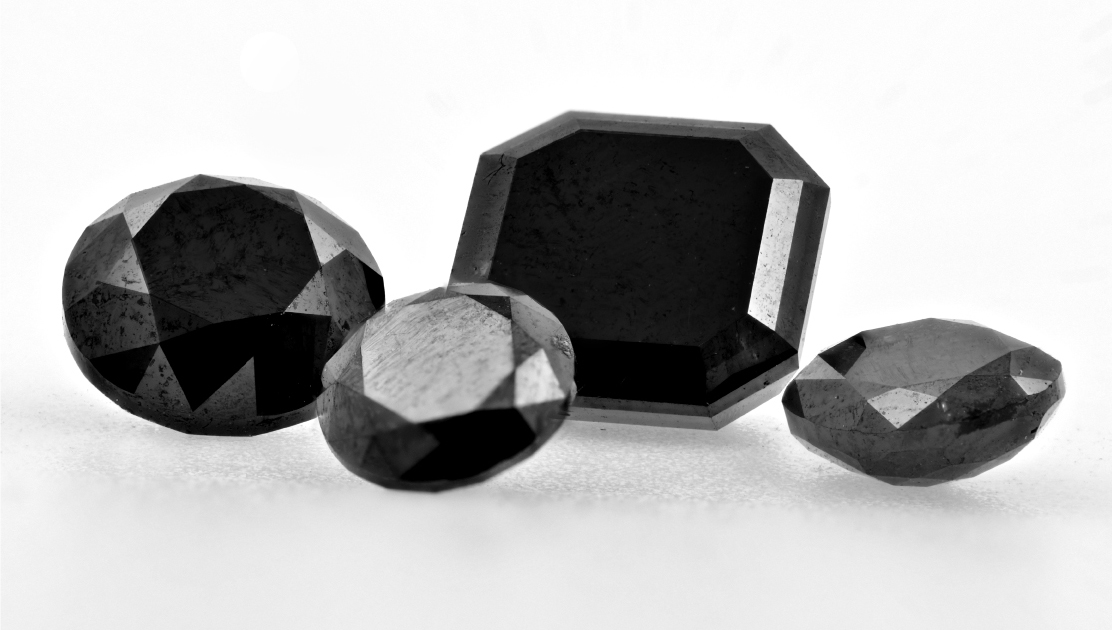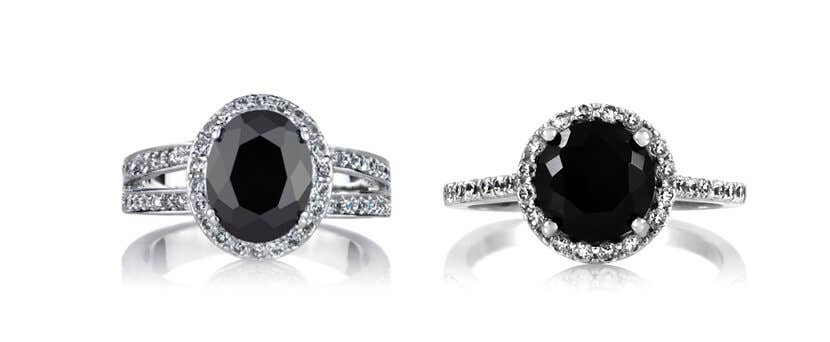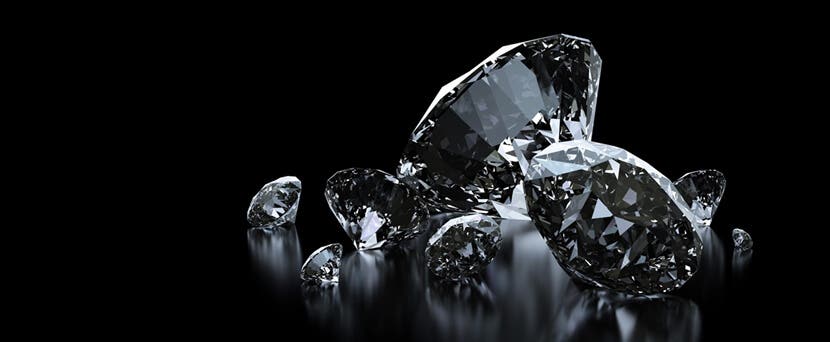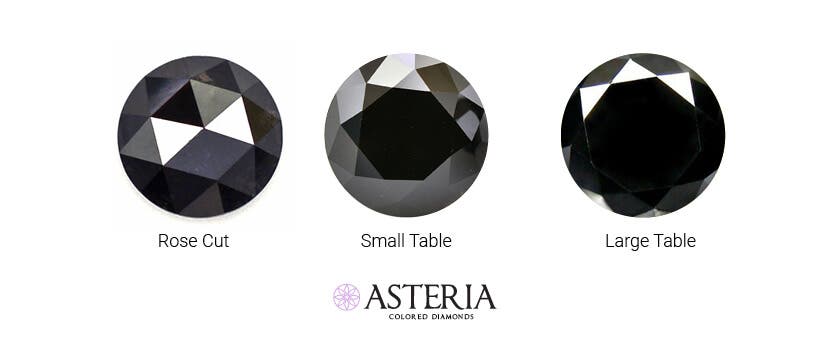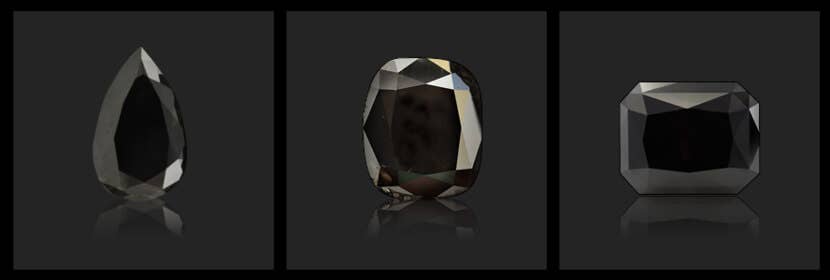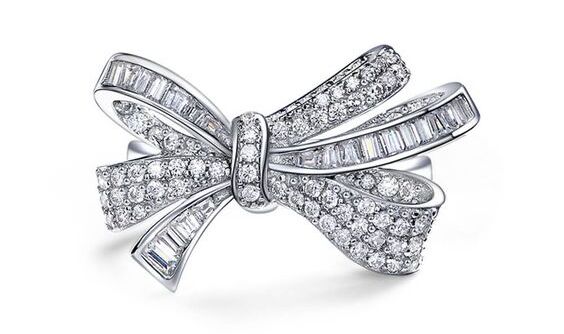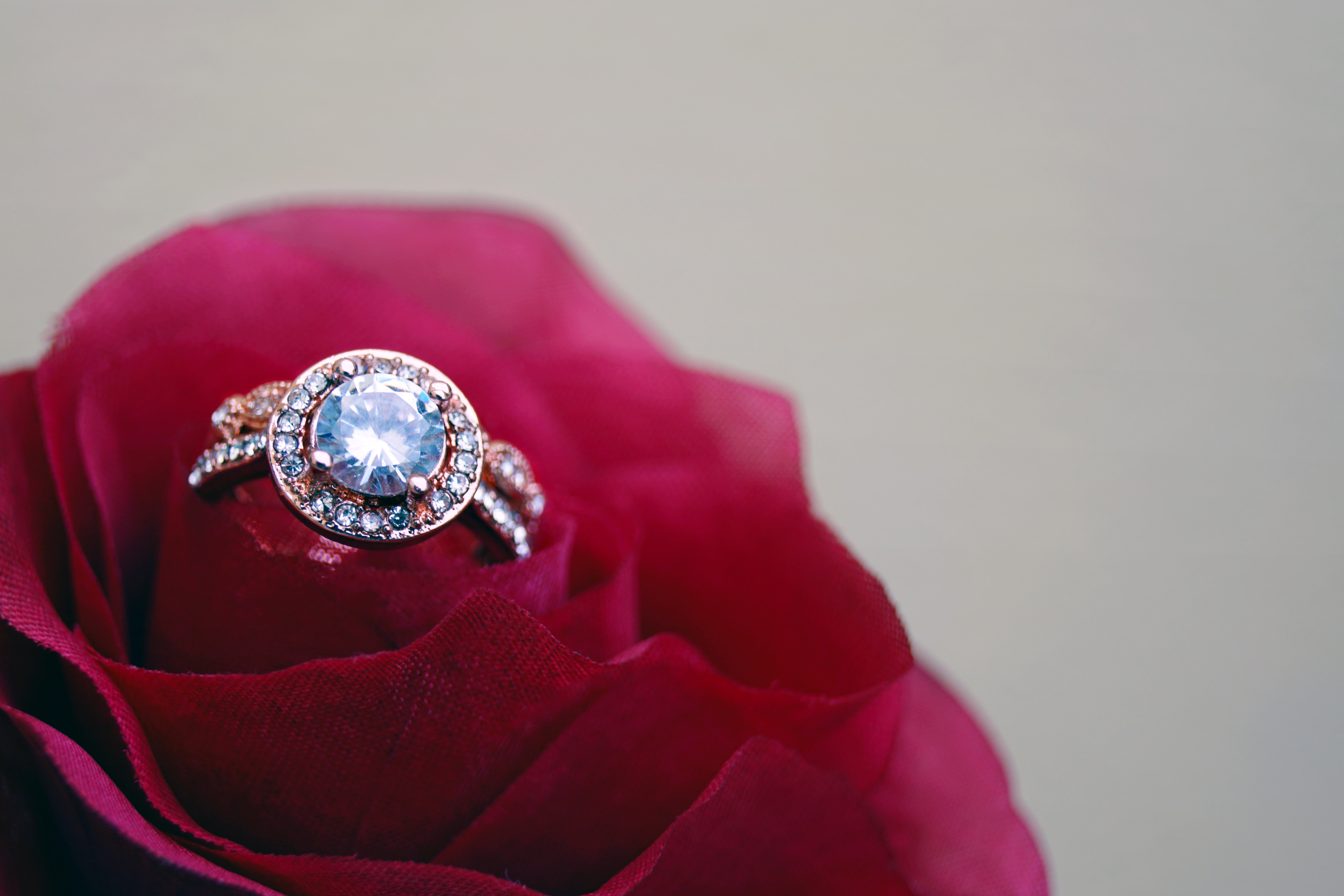Black Diamonds Wiki: Prices, engagement rings, investments & much more
Unlike other colored diamonds, black diamonds gain their distinct color through a mixture of graphite and amorphous carbon, as opposed to naturally occurring interactions with other elements such as nitrogen or boron.
Also known as ‘carbonados’, the mysterious allure of natural black diamonds make them a favorite with collectors and lovers of statement jewelry, as well as a popular choice for engagement rings and men’s bands.
In this natural black diamond education article, we’ll provide you with all the information you need to make an informed purchase. We’ll explain how these stones are formed, how they are graded and, most importantly, how you can determine the natural black diamond prices before you make an invaluable investment. Whether you are looking to buy a piece of jewelry, add to your diamond collection, or make a secure investment for the future, this article will help you make the right decision.
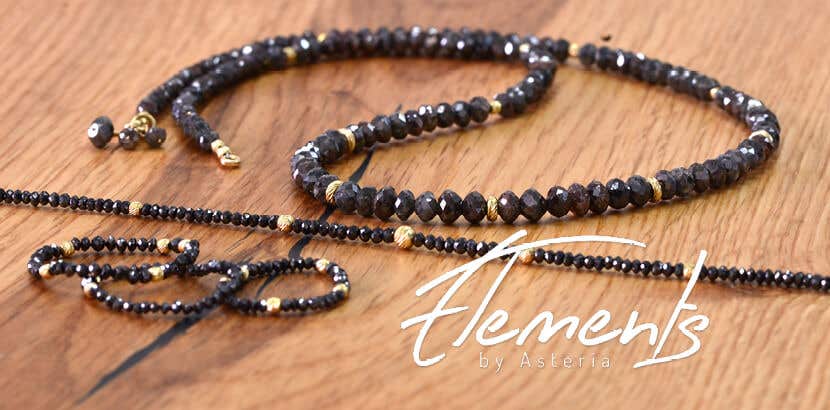
How are natural black diamonds formed?
Whereas other fancy colored diamonds are formed as a result of sustained interactions with elements such as boron or nitrogen during the creation process, natural black diamonds owe their unique coloration to a large number of inclusions (defined as small imperfections present in all diamonds) that are spread throughout the stone. Although these inclusions are usually comprised of graphite, it is not uncommon to find traces of magnetite and hematite as well.
As such, natural black diamonds are formed in essentially the same way as colorless diamonds but they have so many inclusions that they take on a black color. The large number of inclusions also means that natural black diamonds, unlike other colored stones, are usually opaque.
How exactly is the formation process different from white diamonds?
While they are formed in the same conditions as white diamonds, precisely how black diamonds come to have the large number of inclusions that lend them their distinctive color remains a mystery.
The more mundane explanation is that they are the result of high pressure conditions in the earth’s interior combined with dark inclusions of graphite. However, this theory does not explain why the stones are found almost exclusively in Brazil and the Central African Republic.
A more exciting theory holds that natural black diamonds were part of a star that exploded 3.8 billion years ago. Having drifted through space for 1.5 billion years, the stones crashed to earth as part of a meteorite and have been here ever since.
Although not as rare as pink fancy colored diamonds or even yellow diamonds, natural black diamonds are still exceptionally rare, and more so than colorless diamonds. However, as they can be less expensive than colorless diamonds, this may be a surprise to some.
The reason for their relatively low prices is simply that there has not been as large a demand for them as there has been for colorless or other colored diamonds. However, this is slowly changing as in the past few years demand has increased and so too, naturally, have prices.
Unfortunately, as the demand for black diamonds has increased, so too has the number of treated black diamonds. As such, most black diamonds one sees on the market are not genuine, nor rare.
Are black diamonds popular for engagement rings and other jewelry?
Due to their unique, highly aesthetic appearance and deeply rooted symbolic value, black diamonds are a popular option for engagement rings, and have been for several centuries.
In Renaissance Italy, rare black diamonds were believed to possess the power to restore the happiness of a married couple. Today, black diamonds continue to be associated with romance and conjugal happiness.
Natural black diamonds provide stunning contrasts in all kinds of jewelry. They could be the centerpiece of a luxurious wedding ring or fit into a more subtle and sophisticated piece of casual wear. Their lack of flash also means that they can suit men’s jewelry just as well as they do women’s. Indeed, one of the most attractive features of natural black diamonds is they can fit neatly into an either feminine or masculine aesthetic.
Are black diamonds a good investment?
Although not traditionally considered a stone for investors, natural black diamonds have become increasingly popular in recent years. This has meant that the price, which was comparatively low in the past, has now increased to be of similar value to white diamonds.
For those looking to invest in natural black diamonds, the best move would be to look for a stone of considerable size or, alternatively, one with a distinctive feature that would add to its value.
However, investors should be extremely careful when purchasing a black diamond, as the increasing popularity of these stones has led to a burgeoning market for black diamonds that are artificially treated in laboratories. These treated black diamonds are substantially cheaper and of a significantly lower quality than natural black diamonds.
If you are unsure as to whether or not you are making the right purchase, speak to our diamond experts. They will be able to provide you with pre and post-sale valuation services, ensuring that you will only make the best purchases and get the right deal when selling.
Black diamonds pricing
In comparison to the rarer fancy colored diamonds, natural black diamonds are relatively affordable, and comparable in price to colorless diamonds. A fancy black diamond will cost anywhere in the region of $3000 to $5000 per carat. This would mean your average 1 carat wedding ring is likely to cost $3000.
According to legend, the Black Orlov diamond was stolen from a Hindu temple in the mid 19th Century. Originally 190 carats, in 1950 the diamond was cut down to 67.5 carats and was sold at auction for $352 000 - meaning the stone cost $5,214 per carat.
As natural black diamonds are more difficult to cut than other diamonds, a particularly well cut stone is likely to cost more than average black diamond. Other factors, such as how smooth the stone’s surface is and whether or not it is porous, will strongly contribute to a natural black diamond’s price.
Treated black diamonds are substantially cheaper than natural black diamonds as there is less demand for them and they are not especially rare. If you are looking to purchase a treated black diamond then expect to pay around $300 per carat.
| 0.50 carat | 1.00 carat | 2.00 carat | 3.00 carat | |||||
| Per Carat |
Per Diamond | Per Carat |
Per Diamond | Per Carat |
Per Diamond | Per Carat |
Per Diamond | |
| Treated Black Diamonds | $200 | $100 | $300 | $300 | $400 | $800 | $500 | $1,500 |
| Natural Black Diamonds | $2,000 | $1,000 | $3,000 | $3,000 | $3,000 | $6,000 | $3,000 | $9,000 |
| Colorless White Diamonds | $2,500 | $1,250 | $5,000 | $5,000 | $9,500 | $19,000 | $12,000 | $36,000 |
Asteria Black Diamonds For Sale
Visit our online store to see our extensive range of certified natural black diamonds for sale.
Color
Along with red and white diamonds, natural black diamonds only have one level of intensity; fancy black. This is because black diamonds are completely opaque and don’t vary in hue, tone or intensity (a combination of tone and hue). As such, the grading systems that determine intensity for other fancy colored diamonds do not apply to natural black diamonds.
The black color of the stones also means that, unlike other diamonds, black diamonds do not sparkle in light. This lends them a refined, understated quality that fits well with wedding rings and pieces of jewelry.
Clarity
The high number of inclusions present in natural black diamonds means they do not refract light in the same way that other colored diamonds do. Thus, clarity is not an applicable factor in determining their quality and value. Indeed, as the inclusions are the very thing that give these diamonds their color, natural fancy colored black diamonds do not receive clarity grades.
Cut
Black diamonds are notoriously difficult to cut, due to the densely packed inclusions that give the diamond it’s color, and often have cavities in the feathers (areas of the diamond that block light) near their surface.
Due to the expert craftsmanship required in cutting them, black diamonds with a higher quality cut will be of significantly greater value, and thus cut is the most important quality to take into consideration to judge a black diamond’s value.
When purchasing a natural black diamond, be sure that its surfaces are smooth and there are no visible blemishes.
Treated black diamonds are much easier to cut because they lack the high density of inclusions that exist within natural colored diamonds. That being said, treated black diamonds are usually made from low quality diamonds. This means that, even if the cut is of a high quality, the end piece is still likely to be of a low quality.
Carat
A diamond’s carat refers to the weight, not size of a diamond. Thus, as they are denser than other fancy colored diamonds, natural black diamonds may have the same number of carats but look smaller. A one carat, natural black diamond, for example, will be significantly smaller than a one carat, white diamond.
How do opacity, polish, and shape affect the value of black diamonds?
Shape
Due to the difficulties entailed in cutting them, natural black diamonds don’t often come in the same variety of shapes as other fancy colored diamonds. If you are able to find a well cut and unique design then you should consider making a purchase as the stone is likely to be a good investment for the future.
Natural black diamonds appear opaque because of their polycrystalline structure which prevents them from reflecting light. Some natural black diamonds do, however, have gaps between their inclusions that enable light to shine through the stone. These areas do not sparkle but will usually appear as a brown or pale color.
Treated black diamonds are not opaque. This is because they do not get their color from inclusions spread throughout the stone. Instead, their black coloration is present only on the stone’s surface.
Polish
As they are opaque, natural black diamonds will not sparkle in the same way other fancy colored diamonds do. A well-polished black diamond will, however, have a glossy finish to it that gives it a shiny quality that is unique amongst other colored diamonds.
Natural vs. treated black diamonds
Black diamonds for sale in the marketplace are divided into two categories: diamonds that became black naturally during the formation process and diamonds that are treated by a variety of processes to give them a black color
Truly natural fancy black diamonds are very rare and expensive. As demand for them has increased over the past few years, so too has the number of treated black diamonds. Natural black diamonds tend to have a more porous structure than treated ones. This enables them to absorb more light and hence makes them more opaque.
CVD and HPHT
Today, most of the black diamonds one sees on the market are treated. They are created by a process known as HPHT – high pressure and high temperature. By subjecting a normal diamond to both high pressure and high temperature, the surface of the diamond blackens. The same effect is achieved via another process known as chemical vapor deposition (CVD).
Color Enhanced
Color enhanced black diamonds are diamonds that have been subjected to radiation to give them a black color. In most cases, the diamond has been subject to a level of radiation that turns it a dark green color that appears black. As with treated black diamonds, color enhanced black diamonds are less opaque and less valuable than natural black diamonds. Nonetheless, they can still look exceptionally beautiful and are now commonly used in wedding rings.
Treated black diamonds are not ‘fake’ diamonds because a real, colorless diamond is used to begin with. As economic sense – and a craftsman’s expertise - would never allow a high quality colorless stone to be treated, in most cases, the diamonds that are treated are of inferior quality.
Nonetheless, they are still often sold misleadingly as natural black diamonds.
Determining the authenticity of a back diamondWithout specialized equipment it is extremely difficult to determine whether a black diamond is natural or has been treated. If the price seems too good to be true then you are likely dealing with a treated black diamond.
To be sure you are purchasing an authentic natural black diamond, we recommend only purchasing stones that have an accompanying certificate from a recognized gemological institute such as the GIA. At Asteria, all our diamonds are rigorously inspected and come with an original certification from leading gemological institutes.


